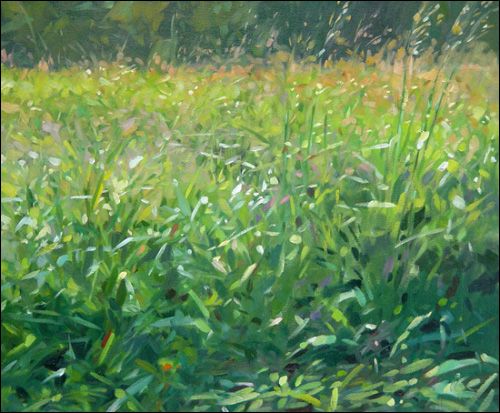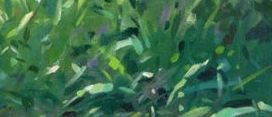Gradation is a seamless transition between opposites. Light changes slowly to dark, repeated images continuously become larger or smaller, one color gently unfolds into another. It all appears to change before our eyes, to become something different from what we "know" images to be.
Actually, nothing changes at all. The mechanics of our eyes cause us to see these things happening. We know a tree trunk to be a tree trunk, but we see its characteristics according to how we perceive light's behavior from our unique viewpoint. Examine how Colin Page interpreted his perception of value gradation caused by the light and shadow within his painting, Growing Tall.
When we squint our eyes at his painting, we see a gradation of light flooding over a field of tall grasses, but if he had been positioned to the right or left, he would have shown us something entirely different. Add to that, within Colin's value gradation creating distance, but there are smaller value gradations within that shadowed area in front. Without these, his painting would be a lot less energetic.
It is within those internal smaller gradations found in the overall big ones where we can create the most magic within our paintings. We just have to look beyond the obvious to find them.





